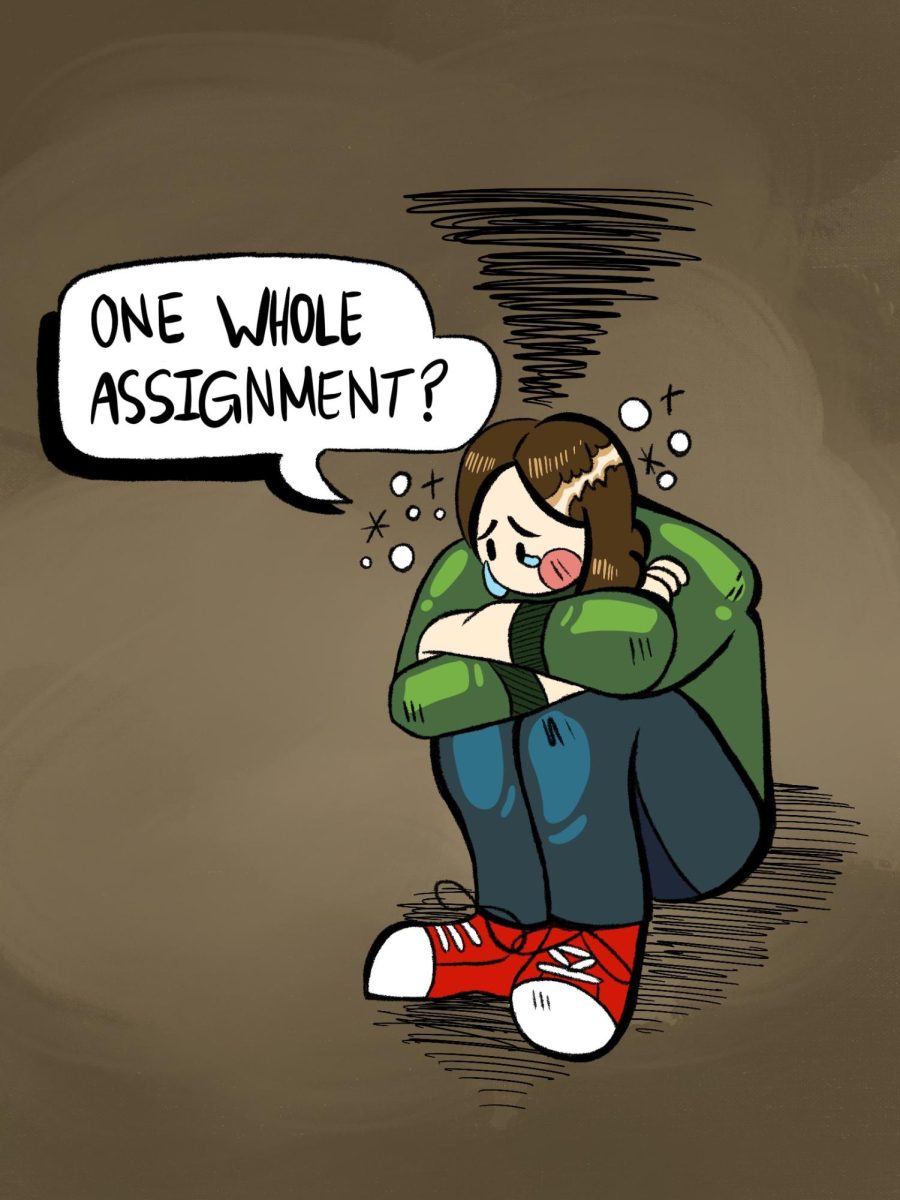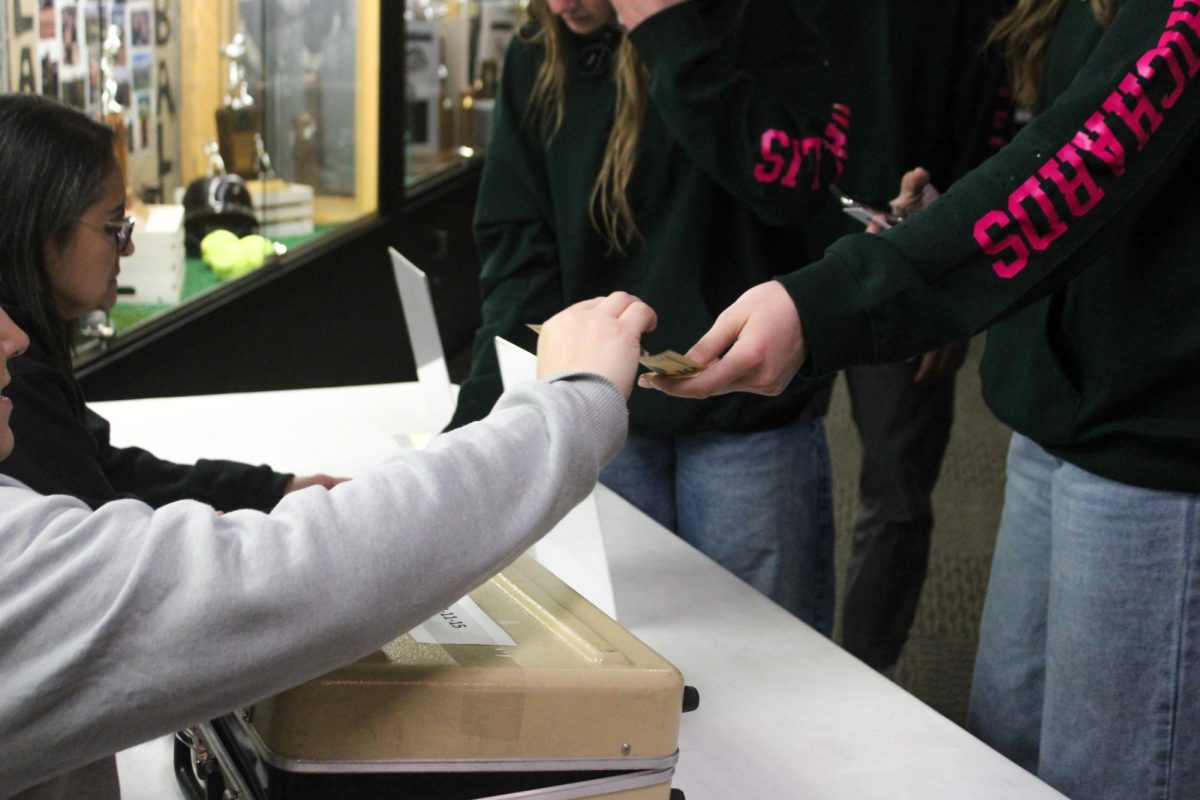For many students, the end-of-July email announcing the district’s new cell phone policy came as a surprise. There were the token good students who were relieved they wouldn’t have to spend yet another year watching their desk partner play Candy Crush nonstop. Then there were the students who were reeling in the fact that they wouldn’t be able to play Candy Crush all year, nonstop.
Whether you were already a no-phone student last year or relied on your phone more than you want to admit, the new cell phone policy affects everyone. In many classes, students drop off their phones at the beginning of class and aren’t allowed to grab it again until the end. That’s a big jump from previous years where most students left their phones sitting on their desk for the whole class period.
The policy was made with the hope of keeping students off their phones and engaged in class. However, there are some aspects of the policy that seem unfair and could raise concerns for some students, teachers, or parents.
One potential big cause for concern is during an emergency. It’s already hard to get every student out quickly; add in the extra obstacle of grabbing phones and it’s sure to take even longer. If students are working their way through rubble from an earthquake, they need to take the most direct route out of the room to get outside as fast as possible. Stopping to grab phones means more time the students are stuck in the building and the sooner an aftershock might come.
Even if teachers say that they’ll let their students grab their phones if there’s an emergency, there’s still some cases where that’s not physically possible. From the perspective of a parent, they might by concerned if they’re trying to call or text their student and the student isn’t picking up because their phone is stuck in a pocket across the room. I can imagine it would be terrifying to be a parent not knowing if their kids were okay during an emergency, like an earthquake, because the student wasn’t able to get to their phone.
Another reason the phone pockets might concern some people is the possibility of phones getting lost. Someone might attempt to steal another student’s phone—or more likely, a student might grab another’s phone on accident during the chaos at the end of class. A phone might get knocked out of the pockets without anyone noticing and get cracked when another student steps on it. A student might forget to grab their phone at the end of class and leave it behind without knowing.
As someone who almost always has my phone with me, it’s scary to think about losing it to the disorganization of high school students. And the school has stated that they are not reliable if phones go missing; it’s unsettling for a lot of us to think about not being able to find our phones again— in the case that they do disappear.
The cell phone policy was a smart way for teachers to encourage students to be more engaged in class, but I think many upperclassmen should be able to discipline themselves.
People gain more self-control as they get older and pushing the cell phone policy onto upperclassmen can seem unfair. For some of the younger grades, not allowing students to have cell phones on their person helps them learn that self-discipline and self-control. But for a lot of juniors and seniors, the policy can almost feel like babying.
The student population is—in a way—being punished for the mistakes of a few. Because even if it’s just a few students in the class that are distracted on their phones, it’s still disrespectful towards the other students in the class and the teacher. But making every student put their phones in a pocket at the beginning of each class feels like a lot.
I think many upperclassmen would agree that the policy feels like the teachers and the district don’t trust us. There are some teachers, though, who have adapted the policy because they know their students are capable of putting their phones away. They trust that their students have self-control, and they won’t make students put their phones in the pockets so long as they keep the phones tucked away. And if a student is on their phone, the teacher could have the student put their phone in the pockets.
I think this works well, as it allows students to have their phones on person in case of an emergency but still keeps students off of the screens. It also revives trust in the teachers from the students when they know that the teacher is treating them more like adults and less like children who need to be watched.
One Highland teacher has adopted the policy in a different way. Steve Manwaring, Highland science teacher, chose to use the phone pockets as more of a hall pass instead of a place for students to keep their phones during class. When a student gets up to leave to go to the bathroom or grab something from the vending machines, they put their phone in a pocket. It allows Manwaring to know how many students are out of the room at a glance and keeps phones out of the hallway—another goal of the policy.
In the end, the policy has both pros and cons. And the reality is that some students will find ways to be distracted with or without phones. It may not be Candy Crush all period but Cool Math Games on their laptop instead.
The policy was put in place to keep phones out of hands during class and to engage students, whether or not it was a good decision is up to each individual to decide.
Phones or Focus?
Seizing Phones Is Not The Solution
Naomi Parnell, Associate Editor
October 1, 2024
1
More to Discover



































